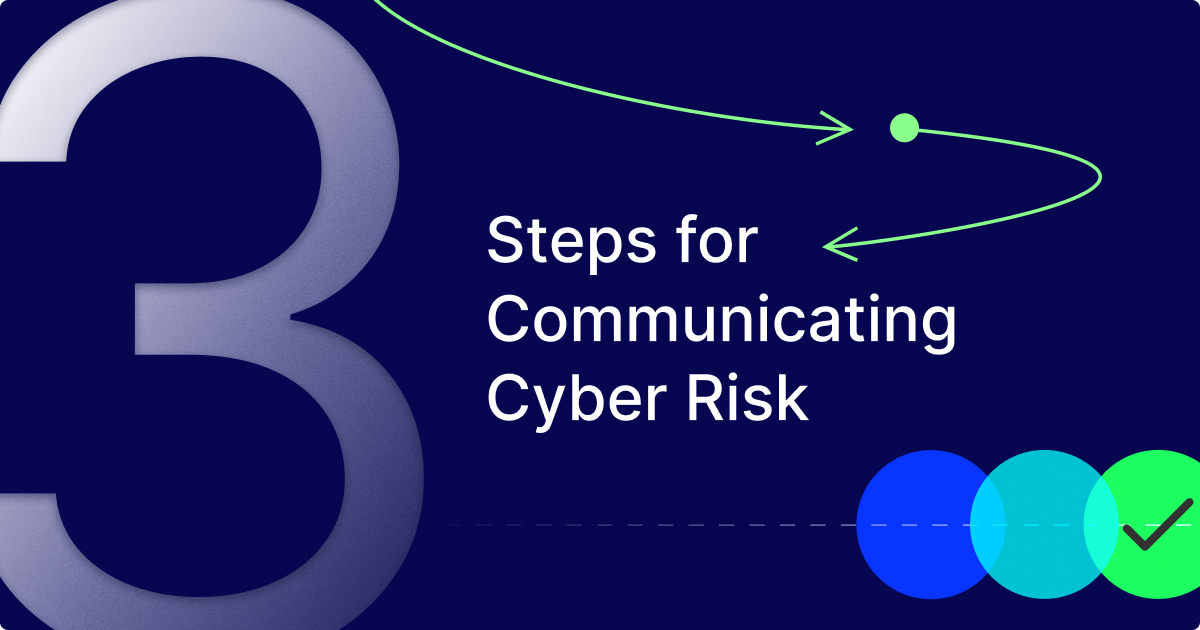You can talk about the extensive reputational damage a breach could cause, and how it will take years to repair. You can show the C-suite all your eye-catching, red-yellow-and-green charts. You can even get into the nitty-gritty of exactly where your organization’s cybersecurity vulnerabilities exist and how threat actors could squirm in and out with reams of sensitive data and files.
But when it comes to getting your leaders and colleagues to understand what’s really at stake if you neglect managing your cyber risk landscape, there’s one language that every stakeholder can immediately understand: financial impact.
The truth is, flashing dollar signs (especially red ones, with that little minus sign in front of them) command attention far more effectively than vague, color-coded descriptions. Telling your CFO “We stand to lose exactly $45 million dollars overnight if this unaddressed vulnerability is exploited, and the likelihood of that happening is very high” just carries a lot more weight than saying “We need to patch this vulnerability because it’s a critical business risk.”
Plus, every other function, from sales to marketing to accounting, uses these terms to communicate to the board and executive team. Why should it be any different for cybersecurity risk management?
Being able to state your case with that level of detail depends on the quality of your risk quantification capabilities.
Ditch the red-yellow-and-green charts
Ordinal risk matrices have been a mainstay of enterprise risk management for decades. Whether your ranking system is red, yellow, and green, one through five, or something else (DEFCONs, anyone?) these charts give quick, at-a-glance analyses of your organization’s exposure to various risks.
That’s about where their utility ends, though. They can tell you which cybersecurity risks pose the most significant threats to your business, and how likely it is you’ll face each of those risks. They might even offer a range of how much you stand to lose if a particular risk comes to pass. But rarely do they pin down a precise dollar figure to each individual risk.
To get to that level of detail — and, crucially, be able to use that information to prioritize which cyber risks deserve your attention first — you need to use a more advanced cybersecurity risk quantification method.
Leverage industry-accepted risk quantification frameworks
Fortunately, there are a few cybersecurity risk quantification frameworks out there that can help cybersecurity risk managers get to this more granular level of analysis.
Here at LogicGate, we’re big fans of both the Open FAIR™ model and Monte Carlo simulations. Both of these generate analyses grounded in hard financial impact numbers, which allows you to conduct true cost/benefit analyses and get the clearest picture of how much you really stand to lose if you ignore or miss certain risks.
Tell a story rooted in financial impact
Armed with some hard financial data tied to your cybersecurity risks, you’ll now be able to go to leadership and make your case for increased funding or other resources to bolster your organization’s cybersecurity risk posture. These numbers will allow you to tell a detailed story, not just throw out a bunch of hunches and hope for the best.
Keep your story simple, and lean heavily into the financials. The members of your C-suite or board may not have the technical expertise to understand the deep specifics of the cyber risk you’re describing, and they likely don’t care or have the time to get into it on that level. Just give them what they need to make a decision — hopefully, one in favor of your strategy.
And, coming to leadership with a convincing and concise story will show them that you’re well-prepared and know what you’re talking about. That will build trust, increasing the likelihood that they’ll approve your plan.
Here’s a hypothetical:
- There’s a villain out there, and they’re after our sensitive information. But they don’t just want to exfiltrate our data. They want to hit our bottom line — hard.
- If we don’t deploy the resources to address this vulnerability in our cybersecurity defenses, we stand to lose $45 million dollars in penalties and lost business, practically overnight.
- Repairing the reputational damage caused by this breach is expected to cost us an additional $15 million over the next three years.
- We’ve determined it will only cost us $550,000 to close this gap. That’s going to save us $59.4 million dollars.
How’s that for a convincing argument any executive can get behind?
Start using stories like this to get buy-in for your cyber risk management initiatives with Risk Cloud’s Cyber Risk and Controls Compliance Solution. Click here to explore.
